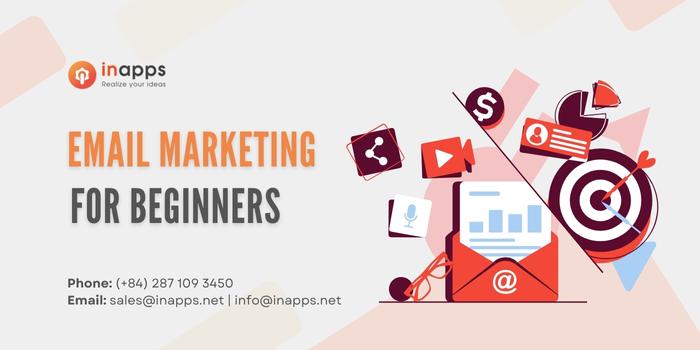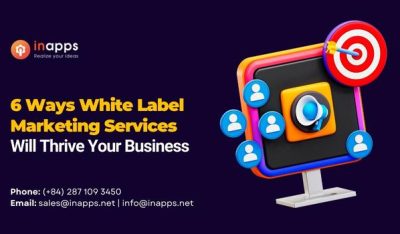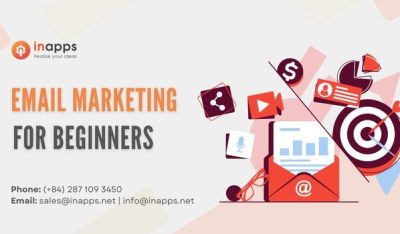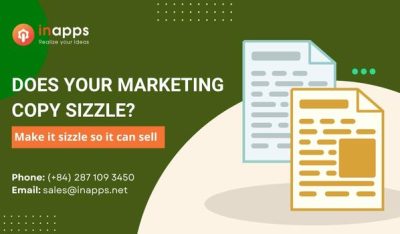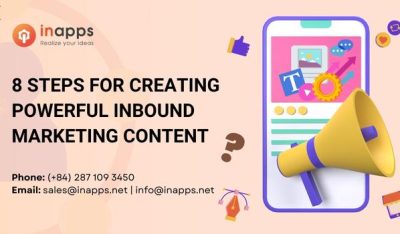- Home
- >
- Inbound Marketing
- >
- Completed guide to Email Marketing for beginners
Whether B2B or B2C, email marketing campaigns are an extremely beneficial, strategic tool when used correctly. If you want to convert more leads and improve customer engagement, then email marketing is the way to go.
Here’s the thing: execution is key. Therefore, if you’re new to email campaigns or have struggled with them in the past, this all-inclusive email marketing guide is for you!
In this article, we’re going to cover everything there is to know about email marketing. For starters, you’ll discover:
- What is email marketing?
- Why is it so important?
- 6 crucial elements that every email campaign needs.
- How to measure the success of your campaign.
Everybody can benefit from skillful email marketing from small start-ups to industry giants. Without further ado, let’s get into it.

What is Email Marketing?
Whoever said the email was outdated was far from the truth. Emails are still very powerful and effective tools for businesses today.
But what exactly does email marketing entail?
Simply put, email marketing is a digital marketing strategy that brands use to reach and engage with new and existing customers.
Often, an email marketing campaign will involve an email sequence, a set of strategically written emails that either usher a new lead through the sales funnel or build stronger relationships with current subscribers over a select period.
Types of Email Campaigns
There isn’t a one-size-fits-all approach to email marketing. There are several types of email marketing campaigns you can choose from.
Here are some examples of common email campaigns seen today:
- Seasonal
- Lead nurturing
- Cart abandonment
- Promotional
- Re-engagement
Here’s what’s interesting: all of these campaigns attempt to inspire and engage with the subscribers. This leads us to our next point.
Why is Email Marketing So Important?
Email marketing is one of the best ways to encourage engagement between you and your customers.
For instance, once you receive a lead’s email, it is often the first point of contact between you and the consumer. Plus, it allows you to create a consistent dialogue with all your subscribers over time.
Without email marketing, you miss a fundamental step in the sales funnel process.
Build a Relationship With Your Audience
Whether you’re sending first-time leads through your sales funnel or you’re fostering a lasting relationship with an already paying customer, email marketing can accomplish both. Not only does it create brand awareness, but it also inspires brand loyalty.
Many huge companies today use email marketing campaigns to generate more brand loyalty by getting personal with their customers, including Macy’s, Whole Foods, and H&M.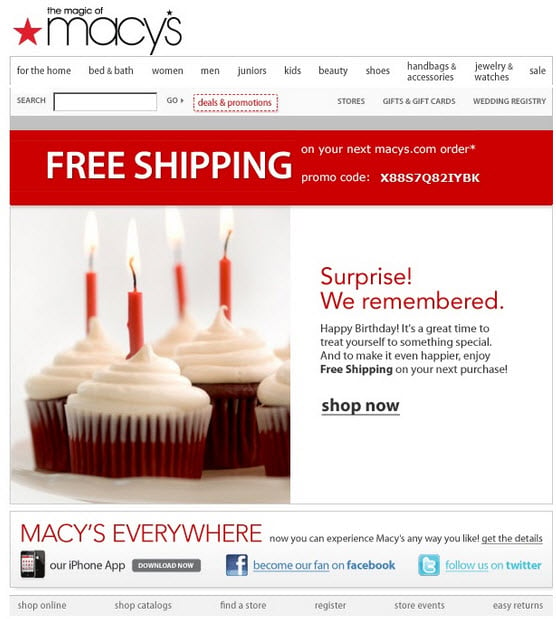
At the same time, small boutiques and niche businesses can also benefit greatly from the tight-knit relationship an email campaign forms between them and their consumer.
However, you will only see positive results when your campaign is executed correctly. So, where should you begin?
6 Key Elements Every Email Marketing Campaign Needs
For starters, here are 6 essential elements every email marketing campaign needs to succeed. Keep reading to learn what you should include in your strategy in order to dish up a fool-proof email sequence.
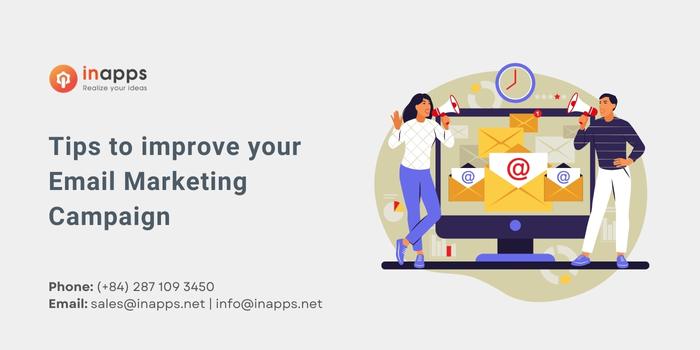
1. Know Your Target Audience
First things first, define your audience. Since your email marketing campaign efforts are meant to foster a lasting relationship with your subscribers, this is definitely the first step of your campaign.
Ask yourself the following questions before you begin to draft your campaign.
- Who is the email for?
- What are their wants, needs, and desires?
- What demographic are you targeting?
- How will the email meet these needs? In other words, what is the main objective of the email?
- Will this email campaign help them connect better with your company?
Once you sort this information out and get all your ducks in a row, it’s time to develop your emails.
2. Eye-Catching Subject Lines
Sour subject lines will put you right in the spam folder. Yuck, you don’t want to go there!
Unfortunately, many businesses spend more time on the email body than on the subject line. This is a disastrous mistake! A poorly written subject line will send your email to the trash before the consumer has even read it.
How To Write Stellar Subject Lines
First, never use spammy words such as “free” or “click this.” You should also avoid all-caps wording like “ACT NOW.” This is a good way to automatically end up in the spam folder.
Instead, think of the subject line as a friendly one-liner that is trustworthy and reliable. Use catchy words that play on the consumer’s emotions, such as:
- Humor / play on words: Ex. “Something looks incredible: these deals!”
- Curiosity: Ex. “A print you never saw coming.”
- Fear of missing out (FOMO): Ex. “Hurry, last chance to save 30%!”
- Personalization: Ex. “James, your exclusive access begins now!”
- Offer a solution to a problem: Ex. “The perfect solution for your pantry!”
These types of subject lines will improve email deliverability and encourage your leads to click on the email.

Once you’ve captured your potential customer’s attention with your killer subject line, you need to maintain their attention with captivating visuals within your email.
3. Captivating Visuals
More times than not, images in emails capture more attention than words. After all, a picture is worth 1,000 words. With that being said, never skimp out on visuals!
People like to SEE what they will receive if they partner with your brand or do business with you. Therefore, videos, vibrant images, and visuals with life and movement are the way to go.
Here’s an important tip to follow: Make sure your images include happy subject matter and are full of bright, pleasing colors. This will reflect a positive image of your company and its products and services.
4. Superb Copy With a Clear Objective
One of the key principles of the revered StoryBrand Framework messaging guide is to develop a CLEAR and CONCISE storyline for your marketing campaign. The same is true for email marketing.
This element is so important that we are going to repeat ourselves: CLARITY IS KEY! For starters, improve the clarity of your message by only using easy-to-digest words that can be mentally processed in a fraction of a second.
At the same time, you should have a single main objective for the email. Always stay on topic with your email so you don’t confuse your audience with too many unclear objectives.
Next, follow these tips to write better copy for your email marketing campaign.
Provide Real Value to Your Subscribers
If you want to draw the attention of your target audience, you need to write email copy that your subscribers will actually connect with. After all, your copy should make them WANT to read the email.
So, how do you do this?
It’s simple. Always make the reader the center of the story and provide them with content that they will truly find valuable. When your emails are customer or client-focused, they are more likely to engage with your brand.
Next, add content that they will find useful, such as:
- Webinar sign-up links / pre-recorded webinars
- Downloadable templates
- Informative tips / advice
- Practical videos
- Easy-to-access promo codes / coupons / etc.
- Exclusive content
- Early access

Be sure to get creative with the type of content you offer!
Incorporate List Segmentation
Furthermore, your wording should be mentally processed in a matter of seconds. If the words you choose are too difficult to swallow, your audience will just give up. Oftentimes, the less wording on your email, the better.
One way to cut back on words is to provide segmented lists. These lists are extremely quick to read, easy on the eyes, and just look good! Wherever you can replace a wordy paragraph with a list, do it.
Proof-Read Before You Send
No one likes to read an email full of noticeable errors. In fact, the negative effects of poorly written emails can actually make the company seem untrustworthy and uncredible in the eyes of the consumer. Obviously, you want to avoid this!
Therefore, you should always have a second pair of eyes look over the email to pick up any spelling and grammar mistakes. Error-free content is the way to go.
5. Mobile-Friendly Design
Nowadays, there’s no excuse to send emails (or any digital marketing materials) that aren’t compatible with mobile devices. In fact, statistics show that 55% of emails are accessed on smartphones and tablets.

As you probably already know, user experience (UX) is everything when it comes to the digital world! Therefore, your emails should also fit this mold. A consumer should be able to access your email on their phone and open all attachments (website links, downloads, coupons, promos, videos, and other offers) in a matter of seconds.
And that’s not all! The email also needs to match the size parameters of the phone screen without cutting off words or elongating images. If the email is distorted, then chances are it will end up in the trash.
6. Define the Frequency
Timing is everything. And so is the amount of times you reach out to a person in a season. While you want to stay engaged with your subscribers, you also don’t want to send them so many emails that you become a nuisance.
Instead, a tastefully crafted email sequence that enlightens and reminds your readers of your objective is the way to go. Typically, three emails per objective is plenty.
Select the Right Time to Start Your Email Campaign
Next, tailor your emails to the time and season you’re in.
For instance, an email about the newest launch of your summer swimsuit line probably shouldn’t be sent out in the middle of January. Rather, keep up with the times so you don’t become irrelevant to your consumers.
How To Assess the Success of Your Email Campaign
Once your email marketing campaign plan is set in motion, you’ll probably wonder how to measure the success of your efforts. Here are some simple steps to take to analyze your campaign.
Run a Pre-Send Test
Before you hit the send button and broadcast your emails to your consumers, it’s always a great idea to run a test first. Simply shoot the emails to your own inbox and give a thorough look at every facet of the email. You can even send them to your staff to see if they experience any problems.
Check that everything works and opens properly, including:
- URL links
- Downloads
- Videos
- Images
- Mobile view
- Promo or coupon code access
If you have trouble with engagement in any way, then it’s best to hold off on the send date until your emails function properly.
Analyze KPIs
Once your email marketing campaign is in motion, it’s time to monitor its performance.
- Are your leads actually receiving the emails?
- Did any of the emails get targeted as spam?
- How many emails were opened?
- How many subscribers engaged with your content?
If you notice a drop-off in subscribers (for instance, many people hitting the unsubscribe button), this could indicate that you’re either targeting the wrong demographic or you’re sending too many emails.
On the other hand, if you aren’t receiving any engagement or seeing an increase in revenue, then this could indicate that your subject lines are weak or your objectives and wording are confusing or uninspiring.
Here’s the good news: If you take the time to analyze the performance of your campaign, you’ll learn what works and what needs improvement. This will lead to a stronger, more effective campaign in the future!
Need More Help With Your Email Marketing Campaign?
We got you covered! At InApps, our experienced team of digital marketing strategists are here to create the best email marketing campaign for your business.
From email marketing fundamentals to lead marketing automation, we’ll help you build lasting relationships with your customers and take your company to new heights. Talk to a strategist and see what InApps can do for you!
List of Keywords users find our article on Google
[sociallocker id=”2721″]
| email marketing |
| email blast |
| email campaign |
| “inbound marketing” |
| b2b drip campaign examples |
| catchy trash can |
| drip campaign examples real estate |
| email marketing companies near me |
| email marketing near me |
| hire a storybrand guide |
| email marketing promotion |
| email marketing services near me |
| storybrand website examples |
| email marketing guide for beginners |
| storybrand website template |
| email marketing guidelines |
| “email marketing” -“fiverr” -“quora” -“reddit” -“twitter” |
| site:www.inapps.net |
| email marketing news |
| fomoex |
| convert to a fraction 55% |
| best seo tool for b2c |
| cart abandonment email templates |
| email marketing strategy |
| cart abandonment emails |
| inbound marketing |
| website funnel easy fast |
| emai |
| marketing |
| “email marketing” seo or tool or ideas or best |
| digital eye exam el segundo |
| target inbound |
| buzz media group |
| a guide to email marketing |
| target el segundo |
| worth1000.com gallery |
| lead nurturing model |
| content marketing vs email marketing |
| business email marketing |
| email marketing guide |
| drip campaign best practices |
| email campign |
| emial |
| emai marketing |
| email marketinf |
| email marketing. |
| marketing is |
| email markeitng |
| email balst |
| email blas |
| e mail marketing |
| email markering |
| email marketimg |
| email marketinh |
| email matketing |
| emaill marketing |
| tastefully simple promo codes |
| inbound target |
| sizzling story starters |
| tastefully simple consultant |
| ideas for email marketing |
| tastefully simple find a consultant |
| storybrand email sequence |
| email marketing strategy for beginners |
| email marketing company near me |
| email marketing beginners guide |
| guide to email marketing |
| swallow line drawing |
| best tailor in ho chi minh |
| tastefully simple logo |
| binh ho net worth |
| tastefully simple consultants |
| first point web design |
| macys trash can |
| beginners word digest |
| niche targeted email list |
| what is email marketing |
| devops spelling |
| 919 marketing |
| sales funnel images |
| storybrand website templates |
| “digital marketing strategy ” -site:facebook.com -site:youtube.com -site:twitter.com |
| email marketing campaign |
| add article designed by one way links |
| quality assurance tips for call centers |
| sitemap update frequency |
| inbound marketing services |
[/sociallocker]
Let’s create the next big thing together!
Coming together is a beginning. Keeping together is progress. Working together is success.




